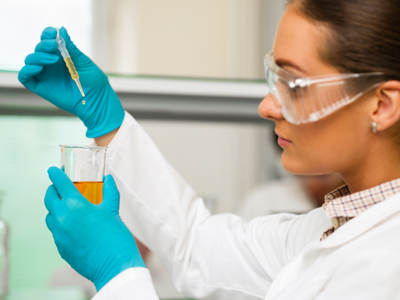

Endothermic and Exothermic Reactions 1
All chemical reactions involve energy in some way. You should know from physics that nothing can happen without energy being involved. Endothermic reactions absorb energy from the surroundings, whereas exothermic reactions release energy into the surroundings. This GCSE Chemistry quiz is the first of two looking at endothermic and exothermic reactions.
Where the energy transferred in a reaction is heat, you can detect the type of reaction (endothermic or exothermic) by using a thermometer or your skin. Heat energy always flows from higher temperatures to lower temperatures. When you carry out an experiment in the lab at room temperature and the reaction vessel (beaker, conical flask or whatever) feels colder, then you have an endothermic reaction. Heat energy will flow from the warmer surrounings into the reaction mixture - it is taking in energy. If the vessel feels warmer, the reaction must be exothermic as the heat energy will flow from the reaction mixture into the surroundings. In practice, it isn't a good idea to just feel the temperature of a reaction vessel as you could end up with a hot or cold burn! It is better to use a thermometer
Ready for more?
not all...
quizzers. Try to win a coveted spot on our Hall of Fame Page.






